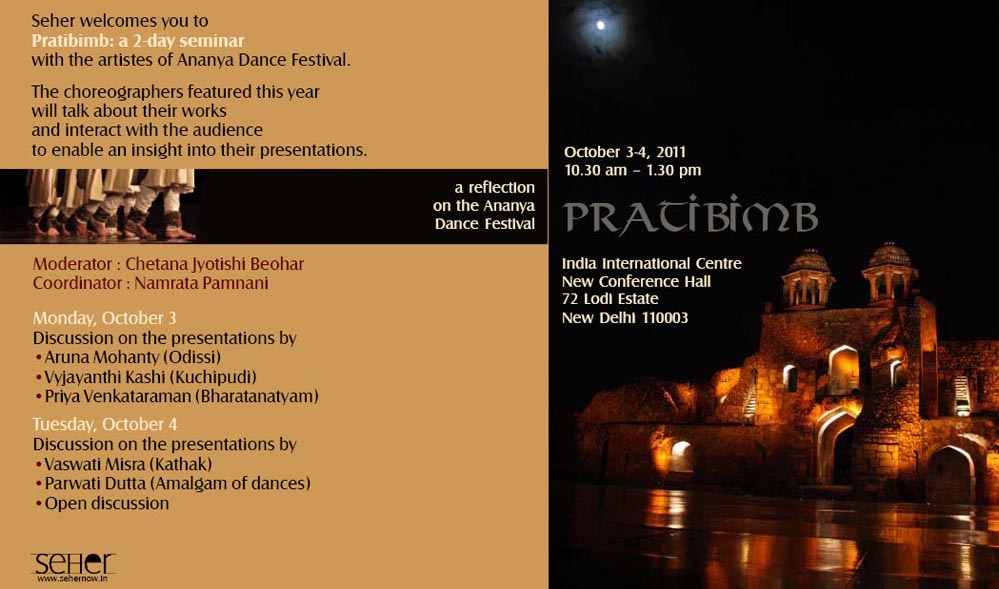
Concept Note
The seminar titled Pratibimb is conceived as a reflection on the Ananya Dance Festival organized by Seher, New Delhi.
Ananya is a festival of Indian classical
dances that features group choreographies of the major Indian classical
forms on a single stage. The seminar is an attempt to bridge that distance
between the performer on stage and the rasikas in the audience. Pratibimb
is envisioned as an interactive session that will explore what goes into
producing the choreographies we see on stage.
The discussion hopes to have the dancer-choreographers articulate their
own thought process as they create. But also to address certain larger
questions that are so relevant to Indian classical dance and other performative
traditions today.
How does the choreographer engage with the grammar and vocabulary of classical dance forms, codifications that are traditional and yet make them resonate in contemporary times to an audience whose own vocabulary and framework is rooted in a globalised ‘modern’ world? The journey of Indian classical dance from the ‘sacred’ to the ‘secular’, temple to proscenium has been much discussed, but what are the new spaces that open up for exploration in terms of design when the proscenium stage is taken to an architectural monument? What are the changing notions of the body of the performer and how do those influence contemporary choreographic work?
Tradition and modernity are ambiguous terms in general and certainly in classical Indian dance. Where are the spaces for innovation within the grammar and vocabulary of classical dance? What are the limits of freedom for an artist, while attempting to be appealing and ‘modern’ through experimentation and innovation in productions? In Pratibimb, we seek to get an insight into how the choreographers who presented their work at Ananya retain the essential spirit of the classical form, while also being innovative and creative. We also hope to telescope the dichotomy between body and mind, between ‘practicing’ and ‘intellectualising’- that are often thrown up to prevent questioning ‘the given’.
The interactive session at Pratibimb this year also hopes to reach out beyond the classical dance community- gurus, dancers and students; to other practitioners and students of other performing arts who work with the body, space and movement like students of theatre, the visual arts and folk performative traditions. The attempt is to create a dialogue beyond the ‘classical dance’ community with fellow artistes-students of the arts and discuss issues that are relevant and shared regarding expression using the body as a medium, in a defined space (whatever that is) with a vocabulary that may or may not be codified, stylised and prescribed; but attempts to reach out to the audience that is increasingly an ‘outsider’.
During the two- day seminar, each dancer-choreographer who presents her/his work at the festival will speak on their creative process. Choreographers and dancers will be in dialogue with the moderator, eminent panelists, and most importantly, the audience. The seminar is a dialogue, led by the choreographers, but enlivened through the participation of the audience- young dancers, scholars, students, dance-enthusiasts.
All are welcome. Debate is encouraged.